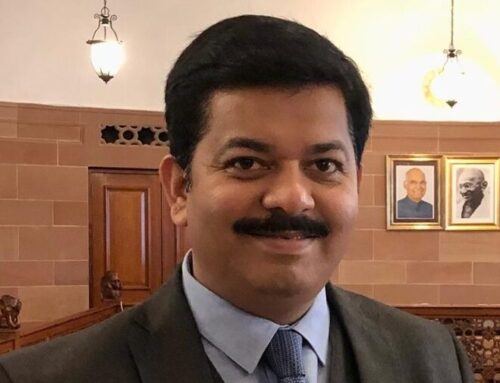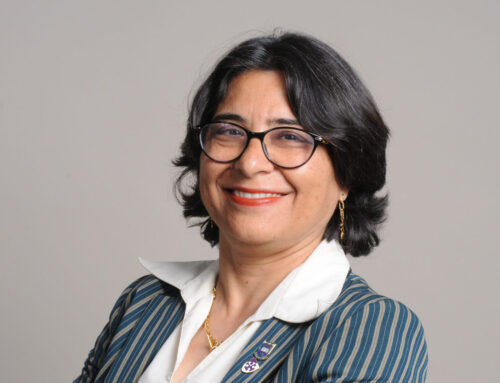John Hoffmire: You’ve had an interesting career that spans mechanical engineering, the transportation sector, and cultural preservation. That’s an unusual mix. I’d love to learn more about how that came about?
Vinita: I don’t see it as such an unusual mix. I’ve always had a love for the Indian railroads. You see, a railway isn’t just tracks and trains. It’s the backbone of the country, connecting people and goods with the various remote parts of our country. The Indian rail system is the fourth largest network in the world. Beyond the immense utility of the railways, there is also a rich cultural, economic, and historical significance to it. As such, it’s been a great field to work in.
I’ve had an interesting journey in this field. I started out with a degree in mechanical engineering. My first job was as a vendor development engineer working on Indo-German transfer of technology with ALSTOM-LHB. Over time, I worked in various mechanical and operational positions for the Northern and Southern railways, steel, and manufacturing. In 2011, I earned an executive masters degree in management from IIM Ahmedabad. That gave me a chance to expand my interest and reach beyond the mechanical engineering side of things. The new degree also led me to a position with the Ministry of Culture where I worked in the areas of heritage studies, cultural mapping, museology, and conservation architecture.
One of the highlights of my more recent career is helping establish and run the National Mission on Cultural Mapping (NMCM). Its purpose is to address the necessity of preserving the threads of rich Indian art and cultural heritage, and to convert the vast and widespread cultural canvas of India into an objective cultural map while helping create a strong “cultural vibrancy” throughout the nation.
While I still carry the lessons from the NMCM, I’m currently the Executive Director (Heritage) at the Railway Board, which combines all that I love about the railways and culture of India. Indian Railways has more than 160 years of rich history and a wide spectrum of both tangible and intangible heritage. It’s the proud owner of four UNESCO accorded World Heritage Sites namely Darjeeling Himalayan Railway (1999), Nilgiri Mountain Railway (2005), Kalka Shimla Railway (2008) and Chhatrapati Shivaji Terminus, Mumbai (2004). There are two more in waiting or on the tentative list namely Matheran Light Railway and Kangra Valley Railway. In addition, while working with the NMCM in 2018, I was instrumental in developing a bilateral memorandum of understanding for cultural and conservation information for the UNESCO World Heritage Site temple complex of Angkor Wat in Cambodia.
Today, Indian Railways maintains 34 museums, heritage parks and heritage galleries, spread all over India, designed to preserve the railway heritage of India. The National Rail Museum in New Delhi and regional rail museums at Chennai, Mysore, Howrah and Nagpur are iconic tourist destinations in their regions.
John: You certainly have had a fascinating career journey. It speaks to how one’s interests evolve and expand as one engages with work and opportunities to learn and grow. Speaking of such, tell me about your experience as a Chevening Research, Science and Innovation Leadership (CRISP) Fellow at St Cross College, Oxford University.
Vinita: The Chevening experience was, starting right from the point of selection as a CRISP scholar, a hugely empowering experience, giving me tremendous confidence in my abilities. The authenticity of the selection process as well as its thoroughness is capped only by the highly qualified cohort I shared my time at Oxford with. Each day was packed with learning inside and out of the classroom, interacting with an array of brilliant, almost incandescent minds.
Coming back to India, and networking with the larger Chevening community has ensured continuity. The resolution to any vexing problem was then just a phone call away, because of the wide-ranging expert base that the Chevening program has carefully curated over the years in India and southeast Asia. Last but not the least, is the warmth and cheer brought in by you, Richard and your families, who went above and beyond the call of mentorship to make us feel truly comfortable and involved in a short span of time.
The shift from core engineering to the more human aspects of its impact on society was easier to understand with CRISP lessons about science, research and innovation. And Miranda Cresswell’s sessions on art for scientists led me to rediscover my passion for painting, a hugely satisfying hobby.
John: Thank you, Vinita. You’ve helped me realize how industrial components of a society have much more than just an economic and environmental effect on a country. I wish you all the best with your good work.
Vinita: Thank you. I hope you’ll come back to India sometime soon and ride the train lines. I think that will give you an even better understanding of the cultural importance of the Indian rail line. And thank you for taking the time to do this interview.
Read the entire interview here at the Center on Business and Poverty
Vinita Srivastava is the Executive Director (Heritage) at Railway Board and an alum of the Chevening Research, Science and Innovation Leadership (CRISP) Programme, 2017.
Interviewer: Dr. John Hoffmire is the Chairman of the Center on Business and Poverty, and Research Associate at the Oxford Centre for Mutual and Co-owned Business





